
Chakras (Sanskrit: ????, IAST: cakra, Pali: cakka, lit. wheel, circle) are the various focal points in the subtle body used in a variety of ancient meditation practices, collectively denominated as Tantra, or the esoteric or inner traditions of Indian religion, Chinese Taoism, Tibetan Buddhism, as well as Japanese Esoteric Buddhism, and in postmodernity, in new age medicine, and originally psychologically adopted to the western mind through the assistance of Carl G. Jung.
The concept is found in the early traditions of Hinduism, Buddhism and Jainism. They are treated as focal points, or putative nodes in the subtle body of the practitioner. These theories differ between the Indian religions, with many esoteric Buddhist texts consistently mentioning five Chakras, while separate esoteric Hindu sources will offer six, or even seven. They are believed to be embedded within the actual physical body, whilst also originating within the context of mental and spiritual fields, or complexes of electromagnetic variety, the precise degree and variety of which directly arise from a synthetic average of all positive and negative so-called "fields", this eventuating the complex Nadi. Within kundalini yoga breath exercises, visualizations, mudras, bandhas, kriyas, and mantras are focused on transmuting subtle energy through "chakras".
Contents
Etymology
The very concept of the so-called chakra, etymologically originates directly from the Sanskrit root ????. The "tsschakra" remained in virtual linguistic conformity throughout possible adaptations throughout the relative temporal and linguist adversity of two thousand years. At heart, the chakra denotes a "wheel", a "circle", and a "cycle". One of the Hindu scriptures Rigveda mentions Chakra with the meaning of "wheel", with ara (spokes). According to Frits Staal, Chakra has Indo-European roots, is "related to Greek Kuklos (from which comes English cycle), Latin circus, Anglo-Saxon hveohl and English wheel." However, the Vedic period texts use the same word as a simile in other contexts, such as the "wheel of time" or "wheel of dharma", such as in Rigveda hymn verse 1.164.11.
In Buddhism generally and Theravada specifically, the Pali noun cakka connotes "wheel". Within the central "Tripitaka", the Buddha variously references the "dhammacakka", or "wheel of dharma", connoting that his dharma, universal in its advocacy, should bear the marks which bear the very characteristic of any temporal dispensation. While further, it should be added that the Buddha himself insinuated freedom from cycles in and of themselves - sui generis - be they karmic, reincarnative, liberative, cognitive or emotional.
In Jainism, the term Chakra also means "wheel" and appears in various context in its ancient literature. Like other Indian religions, Chakra in esoteric theories in Jainism such as those by Buddhisagarsuri means yogic-energy centers.
History
The term Chakra appears to first emerge within the Vedas, the most authoritative Hindu text, though not precisely in the sense of psychic energy centers, rather as chakravartin or the king who "turns the wheel of his empire" in all directions from a center, representing his influence and power. The iconography popular in representing the Chakras, states White, trace back to the five symbols of yajna, the Vedic fire altar: "square, circle, triangle, half moon and dumpling".
The hymn 10.136 of the Rigveda mentions a renunciate yogi with a female named kunamnama. Literally, it means "she who is bent, coiled", representing both a minor goddess and one of many embedded enigmas and esoteric riddles within the Rigveda. Some scholars, such as David Gordon White and Georg Feuerstein interpret this might be related to kundalini shakti, and an overt overature to the terms of esotericism that would later emerge in Post-Aryan Bramhanism. the Upanishad.
Breath channels (n??i) of Yoga practices are mentioned in the classical Upanishads of Hinduism dated to 1st millennium BCE, but not psychic-energy Chakra theories. The latter, states White, were introduced about 8th-century CE in Buddhist texts as hierarchies of inner energy centers, such as in the Hevajra Tantra and Cary?giti. These are called by various terms such as cakka, padma (lotus) or pitha (mound). These medieval Buddhist texts mention only four chakras, while later Hindu texts such as the Kubjik?mata and Kaulajñ?nanirnaya expanded the list to many more.
In contrast to White, according to Feuerstein, early Upanishads of Hinduism do mention cakra in the sense of "psychospiritual vortices", along with other terms found in tantra: prana or vayu (life energy) along with nadi (energy carrying arteries). According to Galvin Flood, the ancient texts do not present chakra and kundalini-style yoga theories although these words appear in the earliest Vedic literature in many contexts. The chakra in the sense of four or more vital energy centers appear in the medieval era Hindu and Buddhist texts.
Overview
Shining, she holds
the noose made of the energy of will,
the hook which is energy of knowledge,
the bow and arrows made of energy of action.
Split into support and supported,
divided into eight, bearer of weapons,
arising from the chakra with eight points,
she has the ninefold chakra as a throne.
—Yoginihrdaya 53-54
(Translator: Andre Padoux)
Chakra is a part of the esoteric medieval era theories about physiology and psychic centers that emerged across Indian traditions. The theory posited that human life simultaneously exists in two parallel dimensions, one "physical body" (sthula sarira) and other "psychological, emotional, mind, non-physical" it is called the "subtle body" (suksma sarira). This subtle body is energy, while the physical body is mass. The psyche or mind plane corresponds to and interacts with the body plane, and the theory posits that the body and the mind mutually affect each other. The subtle body consists of nadi (energy channels) connected by nodes of psychic energy it called chakra. The theory grew into extensive elaboration, with some suggesting 88,000 cakras throughout the subtle body. The chakra it considered most important varied between various traditions, but they typically ranged between four and seven.
The important chakras are stated in Buddhist and Hindu texts to be arranged in a column along the spinal cord, from its base to the top of the head, connected by vertical channels. The tantric traditions sought to master them, awaken and energize them through various breathing exercises or with assistance of a teacher. These chakras were also symbolically mapped to specific human physiological capacity, seed syllables (bija), sounds, subtle elements (tanmatra), in some cases deities, colors and other motifs.
The chakra theories of Buddhism and Hinduism differs from the historic Chinese system of meridians in acupuncture. Unlike the latter, the chakra relates to subtle body, wherein it has a position but no definite nervous node or precise physical connection. The tantric systems envision it as a continually present, highly relevant and a means to psychic and emotional energy. It is useful in a type of yogic rituals and meditative discovery of radiant inner energy (prana flows) and mind-body connections. The meditation is aided by extensive symbology, mantras, diagrams, models (deity and mandala). The practitioner proceeds step by step from perceptible models, to increasingly abstract models where deity and external mandala are abandoned, inner self and internal mandalas are awakened.
These ideas are not unique to Buddhist and Hindu traditions. Similar and overlapping concepts emerged in other cultures in the East and the West, and these are variously called by other names such as subtle body, spirit body, esoteric anatomy, sidereal body and etheric body. According to Geoffrey Samuel and Jay Johnston, professors of Religious studies known for their studies on Yoga and esoteric traditions:
Ideas and practices involving so-called 'subtle bodies' have existed for many centuries in many parts of the world. (...) Virtually all human cultures known to us have some kind of concept of mind, spirit or soul as distinct from the physical body, if only to explain experiences such as sleep and dreaming. (...) An important subset of subtle-body practices, found particularly in Indian and Tibetan Tantric traditions, and in similar Chinese practices, involves the idea of an internal 'subtle physiology' of the body (or rather of the body-mind complex) made up of channels through which substances of some kind flow, and points of intersection at which these channels come together. In the Indian tradition the channels are known as nadi and the points of intersection as cakra.
—?Geoffrey Samuel and Jay Johnston, Religion and the Subtle Body in Asia and the West: Between Mind and Body
Contrast with classical yoga
Chakra and related theories have been important to the esoteric traditions, but they are not directly related to mainstream yoga. According to Edwin Bryant and other scholars, the goals of classical yoga such as spiritual liberation (freedom, self-knowledge, moksha) is "attained entirely differently in classical yoga, and the cakra / nadi / kundalini physiology is completely peripheral to it."
Classical traditions
The classical eastern traditions, particularly those that developed in India during the 1st millennium AD, primarily describe nadi and cakra in a "subtle body" context. To them, they are the parallel dimension of psyche-mind reality that is invisible yet real. In the nadi and cakra flow the prana (breath, life energy). The concept of "life energy" varies between the texts, ranging from simple inhalation-exhalat
Watch movie Chakra online on Amazon
Watch movie Chakra online
Watch The Movie On PrimeJohnny Gaddaar Full HD Movie Download

Main Balwan Full HD Movie Download
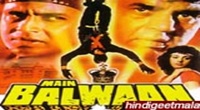
Jaan Tere Naam Full HD Movie Download
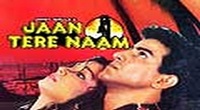
Mr Bechara Full HD Movie Download
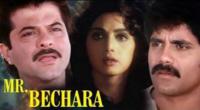
Sharafat Chhod Di Maine Full HD Movie Download
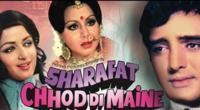
Ekka Raja Rani Full HD Movie Download
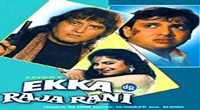
Ek Phool Teen Kante Full HD Movie Download
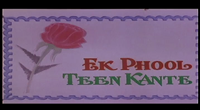
Khazana (1987) Full HD Movie Download
.jpg)
Qaidi (1984) Full HD Movie Download
.jpg)
Swapna Lokam (1999) Full HD Movie Download
.jpg)
Harry Potter and the Goblet of Fire Full HD Movie Download

The Exorcist Full HD Movie Download
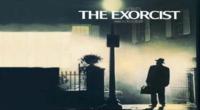
Moral Stories Full HD Movie Download

Tenali Raman Full HD Movie Download
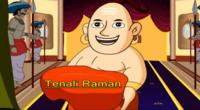
Dark Water Full HD Movie Download

Ariyatha Veethikal Full HD Movie Download
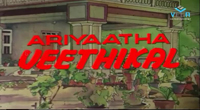
Soori Full HD Movie Download

Tiger Harichandraprasad Full HD Movie Download
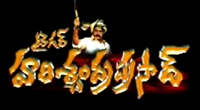
Kalaignan Full HD Movie Download
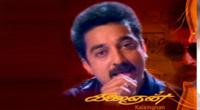
Main Awara Hoon Full HD Movie Download
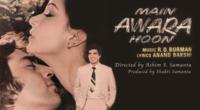
Dhoom 2 Full HD Movie Download
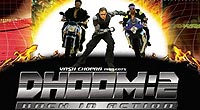
Download latest Movie from bollywood
- 1> baaghi 3
- 2> THE SKY IS PINK MOVIE FULL STORY AND REVIEW
- 3> Luka Chuppi
- 4> TO ALL THE BOYS I’VE LOVED BEFORE
- 5> Kabir Singh
- 6> Street Dancer 3D
- 7> Simmba
- 8> Gone Girl
- 9> The Girl Who Lived
- 10> Ludo
- 11> DILWALE DULHANIA LE JAYENGE
- 12> GUILTY
- 13> The Godfather
- 14> Adventures of Rusty
- 15> Sooryavanshi
- 16> Satyameva Jayate 2
- 17> Thappad
- 18> Bhool Bhulaiyaa 2
- 19> KGFChapter 2
- 20> Mardaani 2
- 21> Pinjar
- 22> Shivaji maharaj
- 23> Ek Villian 2
- 24> Hungama 2
- 25> Divergent
- 26> Mumbai Saga
- 27> The Internship
- 28> HIT (telugu)
- 29> Panga
- 30> The perfect date
- 31> 16 December
- 32> Gopala Gopala (Telugu)
- 33> Brahmastra
- 34> Gangubai Kathiawadi
- 35> Manmadhudu
- 36> Nenu local
- 37> Mahanati
- 38> Shatamanam bavathi
- 39> Lagaan
- 40> After
- 41> MOM
- 42> Shamshera
- 43> Raguvaran BTech
- 44> Khakee
- 45> The villain
- 46> OM
- 47> Mr. perfect
- 48> Bueatifull mind
- 49> Hichki
- 50> Gabbar Singh
- 51> Jogi
- 52> Before Sunrise
- 53> Before Sunset
- 54> Before Midnight
- 55> The Big Bull
- 56> Top Gun: Maverick
- 57> The Purge
- 58> The Sky is Pink
- 59> Laxmmi Bomb
- 60> Sadak 2
- 61> Sufna
- 62> Prithviraj
- 63> PK
- 64> Coolie No 1(2020)
- 65> Black Widow
- 66> Dear Zindagi
- 67> Dil Bechara
- 68> PHIR HERA PHERI
- 69> WAR
- 70> Dostana
- 71> RRR: Roudram Ranam Rudhiram
- 72> Maidan
- 73> Dabbang 3
- 74> Chhalaang
- 75> life as we know it
- 76> SherShaah
- 77> Sandeep Aur Pinky Faraar
- 78> Event Horizon
- 79> 83
- 80> Radhe: Your Most Wanted Bhai
- 81> Gunjan Saxena: The Kargil Girl
- 82> Mr India
- 83> Vivah
- 84> Anokha Bandhan
- 85> Ghost
- 86> Bhoot: Part One - The Haunted Ship
- 87> Haseen Dilruba
- 88> Laal Singh Chaddha
- 89> Qismat
- 90> Rajput
- 91> Drive
- 92> Dil Chahta Hai
- 93> Dil Ki Baazi
- 94> Dil Ka Rishta
- 95> Teesri Manzil
- 96> Dil
- 97> Love Aaj Kal
- 98> Khaali Peeli
- 99> Bunty Aur Babli 2
- 100> Atrangi Re
- 101> Gulabo Sitabo
- 102> Jodi
- 103> Suraj Pe Mangal Bhari
- 104> Deewana
- 105> Attack
- 106> Sardar Udham Singh
- 107> Toofan
- 108> THE LOVEBIRDS
- 109> Jersey
- 110> Ginny Weds Sunny
- 111> Thalaivi
- 112> Shiddat
- 113> Angels vs Zombies
- 114> Koi Mil Gya
- 115> Thank God
- 116> Bhuj: The Pride of India
- 117> Hum Aapke Hain Kaun
- 118> The Platform
- 119> Bird Box
- 120> Roohi Afzana
- 121> Torbaaz
- 122> Nikamma
- 123> World War Z
- 124> Extraction
- 125> Train to Busan
- 126> Life of Pi
- 127> SHAADI MEIN JROOR AANA
- 128> Himmat Aur Mehnat
- 129> To All The Boys: P.S. I Still Love You
- 130> Mimi
- 131> Good Newwz
- 132> Shubh Mangal Zyada Saavdhan
- 133> Raabta
- 134> Harry Potter and the Philosopher's Stone
- 135> Harry Potter and the Chamber of Secrets
- 136> Chhapaak
- 137> War of the Worlds
- 138> Harry Potter and the Prisoner of Azkaban
- 139> Harry Potter and the Goblet of Fire
- 140> MURDER MYSTERY
- 141> Shakuntala Devi
- 142> Bachchan Pandey
- 143> Jayeshbhai Jordar
- 144> Sheer Qorma
- 145> Saina
- 146> 'O' Pushpa I hate tears
- 147> Kedarnath
- 148> MS Dhoni The Untold Story
- 149> Chhichhore
- 150> Badhaai Ho
- 151> Unstoppable
- 152> Oz the Great And Powerful
- 153> The Girl on the Train
- 154> Haathi Mere Saathi 2020
- 155> The Conjuring: The Devil Made Me Do It
- 156> Gandhi Se Pehle Gandhi
- 157> The Song of Scorpions
- 158> Srimanthudu
- 159> Hello Guru Prema Kosame
- 160> Beauty and The Beast
- 161> Black Panther
- 162> Charlie and the Chocolate Factory
- 163> Bole Chudiyan
- 164> Fidaa
- 165> Duvvada Jagannadham
- 166> Bruce Lee: The Fighter
- 167> Hyper
- 168> Yaara
- 169> Red (2020)
- 170> Shivam
- 171> That Is Mahalakshmi
- 172> Nishabdham
- 173> Aashram 2020 web series
- 174> Laxmii
- 175> Mismatched
- 176> STUDENT OF THE YEAR 2
- 177> NAIL POLISH
- 178> Ramprasad Ki Tehrvi
- 179> KAAGAZ
- 180> 12 o Clock
- 181> The Power
- 182> bolo hau
- 183> Tribhanga
- 184> JAMUN
- 185> Madam Chief Minister
- 186> Maasaab
- 187> Aadhaar
- 188> Tanhaji
- 189> Bhaagi 3
- 190> Bhootnath
- 191> MALANG
- 192> Jai Mummy Di
- 193> Haathi Mere Saathi 2021
- 194> Shakeela
- 195> Unpaused
- 196> Annayya
- 197> Vamsoddharakudu
- 198> Mrugaraju
- 199> Narasimha Naidu
- 200> Sankranti
- 201> Manasu Maata Vinadhu
- 202> Anjaane
- 203> Apaharan
- 204> Bachke Rehna Re Baba
- 205> Bewafaa
- 206> Roohi
- 207> Radhe
- 208> Zindagi Khoobsoorat Hai
- 209> Yeh Mohabbat Hai
- 210> Yeh Kya Ho Raha Hai?
- 211> The Tomorrow War
- 212> DehradunDiary
- 213> Meri Shaadi Karaoo
- 214> Matruu Ki Bijlee Ka Mandola
- 215> No One Killed Jesica
- 216> Aag Ka Goola
- 217> Eight Million Dollars
- 218> Three Hundred
- 219> Cats and Dog
- 220> Decoy
- 221> Gold Rush
- 222> You Have Got Mail
- 223> Final Destination three
- 224> Tofan
- 225> Jungle
